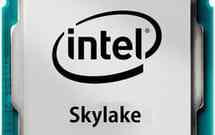Latest update on February 20, 2016 at 11:43 AM by jak58 .

If you are in the market for a new PC that is more modern, more efficient, and able to run the newest apps and games, you should consider upgrading to an Intel Skylake processor. Unlike laptops, which tend to have a fixed hardware configuration, desktop computers are much more scalable, you can easily upgrade a PC without having to replace all of the built-ins.
Your upgrade kit will consist of a motherboard, a processor, and possibly some RAM modules. You can keep components with the following connectivity: SATA, PCI, and PCI-Express. Components that are more than 10 years old should be discarded (AGP, PATA, and IDE). You can choose a motherboard from the following brands: Biostar, MSI, ASRock, Gigabyte, or Asus. The selected motherboard must be equipped with an LGA 1151 socket (compatible with Skylake processors), and most importantly, it should fit into your current PC case. Most of the modern motherboards integrate an audio chipset (sound card), a network interface (Ethernet port), and at least one video output to connect a screen. High-end models tend to provide additional connectivity options:
H110: Basic model for a lightweight configuration dedicated to multimedia, office use, and computer graphics.
B150: Allows full use of the latest high-performance graphics cards (PCI-Express v3.0).
H170: In addition to the features described above, the H170 will enable you to configure multiple hard drives in a RAID. Furthermore, it is compatible with Intel's SSD Caching technology, which will allow a combined use of a regular hard drive and SSD.
Z170: In addition to the features described above, a Z170 will enable you to configure multiple graphics cards to operate simultaneously (NVIDIA SLI or AMD Crossfire). It will also provide an ideal platform to overclock your Core i5-6600K or Core i7-6700K processor. Skylake processors officially support DDR4 with a voltage of 1.2V and DDR3L with a voltage of 1.35V. Regular DDR3 can also be used, but its higher voltage of 1.5V - 1.65V will prematurely wear out the processor. In such situations, it would be better to opt for low-voltage DDR3.
It is recommended that you have at least 4 GB of RAM for office, internet, and basic multimedia use, 8 GB of RAM for video games, and between 16 to 32 GB of RAM for heavy computer graphics and video editing. Furthermore, you can benefit from the advantages offered by a dual channel architecture by installing a matching pair of RAM.
Some motherboards are compatible with both DDR 3 and DDR 4. Choosing DDR3 over DDR4 won't have much of an impact over the performance of your PC. You may either use DDR3 or DDR4, but you should never combine the two. All Skylake processors have an integrated graphics chipset that can handle most of your basic tasks. Most of them also include a heat sink, which is an electronic device that incorporates either a fan or a peltier device to keep components cool. Note that the 6600K and 6700K models do not have heatsinks, as they are commonly used for overclocking, or forcing a computer or hardware component to operate faster than the manufacturer-specified clock frequency. These models thus require a more effective cooling system.
The choice of the processor will primarily depend on what you do with your computer:
Pentium G 4000 series: Ideal for a basic or office use. You can also run games video games compatible with the GTX950 or R9 270X graphics card.
Core i3 6000 series: Multimedia and gaming with a GTX960 or R9-380.
Core i5 6000 series: Gaming and graphics with a GTX970/980 or R9-390.
Core i7 6000 series: Gaming and graphics with a GTX980Ti or R9 Fury X.